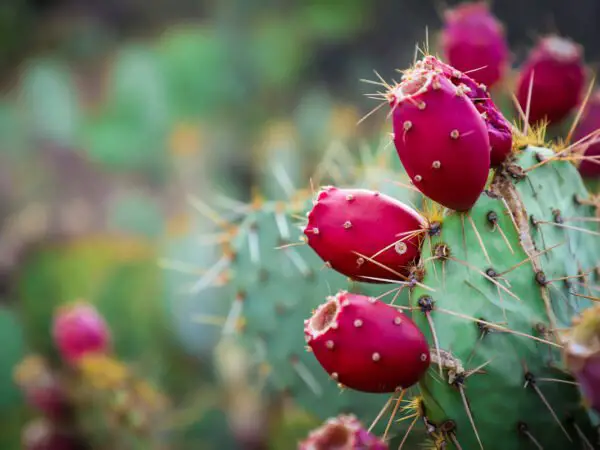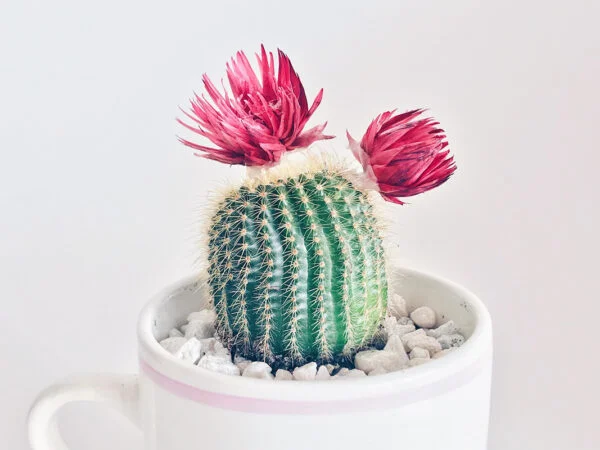Ever found yourself in a prickly situation with cactus needles stubbornly lodged in your clothes, pants, and socks? Ouch! It's frustrating, right? But fear not – we've got you covered. In this guide, we'll unveil the secrets to effortlessly ridding your clothes, pants, of those pesky cactus spines. No more battling with tweezers or endless frustration!
So, if you're tired of grappling with these tiny nuisances and want to learn the tricks that make removing cactus needles a breeze, stick around. We'll share practical tips and hacks that will have your clothes needle-free in no time. Ready to say goodbye to those clingy little thorns?
Key Takeaways
-
Handle with Care: Always approach cactus needle removal with caution to avoid injury or further embedding of the needles.
-
Use Adhesive Tape: Employ adhesive tape to gently lift and remove cactus needles from clothing.
-
Consider wearing thick gloves, protective clothing, and pants when dealing with cacti to minimize the risk of needle penetration.
-
Thorough Washing: After needle removal, thoroughly wash the affected pants to ensure all microscopic needles are removed.
-
Proper Disposal: Dispose of removed cactus needles carefully to prevent accidental injuries to yourself and others.
-
Preventive Measures: Implement preventive measures when around cacti to avoid future incidents.
Understanding Cactus Needles
Differentiate between barbed and non-barbed cactus needles. Barbed cactus needles have tiny hooks that make them difficult to remove, while non-barbed ones are easier to extract. When dealing with barbed needles, extra caution is essential to prevent breakage during removal.
Understand the structure of glochids and spines for effective removal. Glochids are small hair-like structures found on some cacti, such as prickly pears, which easily detach from the plant and can penetrate skin or clothing. Spines are larger, sharper structures that may lodge deeply in fabric.
Identify the types of cactus needles commonly found in clothing. Common culprits include glochids from prickly pear cacti and spines from various types of barrel cacti. These tiny but mighty nuisances can embed themselves in different fabrics, making their removal a tricky task.
Cactus spines vary widely depending on the species; some may be long and sturdy while others are shorter but more numerous.
Removing Cactus Needles Safely
Patience is key. Avoid rushing through this process as it could lead to broken or partially embedded needles causing further irritation.
Firstly, gently shake or use a pair of tweezers to pluck off any large visible spines or glochids stuck on the fabric's surface.
Recognize the potential dangers of leaving cactus needles in clothes by understanding that they can cause discomfort if left unattended for too long.
Understand the risk of skin irritation and infection from embedded needles, as these foreign objects can introduce bacteria into your skin when they pierce through it.
Be aware of prompt needle removal’s importance because delayed extraction increases risks like infections.
Pre-Removal Precautions
Safety Gear
Before learning how to remove cactus needles from clothes, it's crucial to take some precautions. First, always wear protective gloves when handling cactus needles. These gloves act as a barrier between the sharp spines and your skin, preventing accidental pricks. Consider wearing safety goggles if you're dealing with stubborn cactus needles that may splinter during removal. Lastly, choose clothing that provides adequate protection against needle penetration; thick materials like denim can be helpful.
Needle Handling
Handling cactus needles requires caution to avoid injury. Always use a gentle touch when removing the needles from delicate fabrics such as silk or thin cotton. When dealing with contaminated clothing, make sure not to spread the tiny barbs further into the fabric or onto your skin by accident.
When removing cactus needles from clothes, remember these important safety tips: Wear protective gloves and consider using safety goggles for stubborn needles; handle the needles with care and choose appropriate clothing for protection against penetration.
Manual Needle Extraction
Tweezers Method
The tweezers method is a precise and effective technique. Begin by utilizing fine-tipped tweezers for accurate needle extraction. Grasp the base of the needle firmly with the tweezers, ensuring a good grip for successful removal. Patience and steady hand movements are key when using tweezers to avoid breakage or leaving behind fragments.
For example, if you find yourself dealing with stubborn cactus needles embedded in fabric, employing this method can help extract them carefully without causing damage to the clothing.
Sticky Tape Technique
Duct Tape
Another practical approach for removing cactus needles from clothes involves using duct tape. Pressing duct tape firmly onto the clothing helps lift embedded needles effectively. Slowly peel off the duct tape, which will pull out multiple tiny needles at once, making it an efficient process for removing numerous tiny spines.
By repeating this process with fresh duct tape until no more needles adhere, you ensure thorough removal of all remaining prickles from your garment.
Lint Roller
Utilizing a sticky lint roller is also an excellent way to pick up loose cactus needles from clothes. By rolling it over the fabric and applying pressure as you go along, you can effectively remove any remaining spines that haven't embedded deeply into the material. If one sheet on the lint roller becomes filled with needles during use, simply replace it with a new one to continue picking up more spines.
Clothing Protection Strategies
Thick Fabrics
Thicker fabrics, such as denim or heavy canvas, can pose a challenge. The densely woven nature of these materials makes it easier for the tiny needles to embed themselves deeply. When dealing with cactus needles in thick fabrics, it's important to understand that their removal may require more effort and patience. Stronger removal methods might be necessary due to the needle's ability to penetrate deeply into the fabric. For instance, using tweezers or a lint roller with strong adhesive tape can help lift embedded needles from thick fabrics effectively.
Persistence is key when tackling cactus needles in dense materials like heavy-duty work clothes or outdoor gear. It's essential not to rush the process but rather take your time and carefully inspect the fabric for any remaining needles after each extraction attempt.
Needle-Resistant Materials
As a preventive measure against cactus needle penetration, opting for clothing made from needle-resistant materials can significantly reduce the likelihood of encountering this issue. Synthetic blends and tightly woven fabrics are excellent choices as they minimize needle penetration due to their close-knit structure.
For example, garments made from synthetic fibers like nylon or polyester are less likely to allow cactus needles through compared to loosely woven natural fibers like cotton. Tightly woven outdoor clothing designed specifically for hiking or gardening often incorporates features that make them resistant to punctures by sharp objects such as thorns and spines.
Prioritizing protective clothing options when venturing into cactus-prone areas is crucial for minimizing potential encounters with stubborn cactus spines. Wearing specialized protective gear such as gardening aprons with multiple layers of tough material can act as an effective barrier against accidental contact with prickly plants.
Washing After Needle Removal
Pre-Wash Tips
Before tossing your clothes in the washing machine, there are a few precautionary measures you can take to ensure that all cactus needles are removed. Firstly, take the affected clothing outdoors and give it a good shake. This will help dislodge any loose cactus needles that might still be clinging to the fabric. Next, carefully inspect the garments under bright light to identify any remaining embedded needles. It's crucial to detect these tiny offenders before they wreak havoc in your washing machine or worse, on your skin. For heavily affected items, consider soaking them in cold water for a while before proceeding with regular washing.
If you're dealing with particularly stubborn cactus needles that refuse to budge, don't fret just yet! You can try adding some white vinegar or baking soda during soaking or directly into the wash cycle as these substances can help loosen those pesky little spines from the fabric.
Washing Techniques
When it comes time to actually wash your clothing after removing cactus needles, opt for a gentle cycle using cold water. Hot water should be avoided at all costs because it can cause the fibers of your clothes to tighten around any remaining prickles – making them even more challenging to remove later on.
The use of white vinegar or baking soda is not only limited to pre-wash treatments; you can also add these household staples directly into the wash cycle itself for an extra boost in needle removal efficiency. These ingredients work wonders by helping loosen and dislodge any lingering cactus spines from your garments.
Microscopic Needles Challenge
Visual Inspection
After washing your clothes, it’s crucial to examine them thoroughly for any remaining cactus needles. Check the seams, pockets, and folds where needles may still be lodged. Sometimes these tiny culprits can be hard to spot with the naked eye, so using a magnifying glass can help you get a closer look.
It's important to remember that even after washing, some of these needles might still remain in the fabric due to their microscopic size. Therefore, conducting a visual inspection is essential before proceeding further.
When examining your clothing post-wash, pay special attention to areas where the fabric is folded or bunched up. Cactus needles are sneaky and can easily hide in these creases.
Specialized Tools
Investing in specialized tools designed for needle removal can make this task much easier. Consider getting needle-nose pliers, which have slim tips that allow you to grasp and pull out stubborn cactus needles from various fabrics without causing damage.
Another helpful tool is a fabric shaver, especially for removing surface-level cactus needles from knitted garments like sweaters or cardigans. The fabric shaver works by gently shaving off the top layer of fabric where the pesky little spines might be embedded.
For those deeply embedded cactus needles that seem impossible to remove with regular tweezers or pliers, keep a sewing awl handy. This sharp-pointed tool allows you to carefully extract those stubborn spines without damaging the surrounding fabric.
These specialized tools not only make needle removal more efficient but also minimize potential damage to your clothes during the process.
Disposal of Removed Needles
Safe Disposal Methods
After successfully removing cactus needles from your clothes, it's crucial to dispose of them safely. First, place the removed cactus needles in a puncture-proof container immediately after extraction. This prevents accidental pricks and ensures safe handling. Then, seal the container securely to prevent any spillage or exposure to others. Finally, when discarding the container, follow local regulations for proper disposal.
It's important not to place used tape or removed cactus needles directly into household waste bins due to the risk they pose. Instead, opt for specialized disposal methods that minimize potential harm and ensure safety for waste management workers.
Environmental Considerations
When disposing of cactus needles and contaminated materials, it's essential to consider their environmental impact. Microscopic cactus spines can cause harm if not handled properly during disposal. Therefore, eco-friendly disposal methods should be considered as part of responsible waste management practices.
To minimize harm to the environment while getting rid of cactus needles from clothes, it is advisable to follow local guidelines regarding hazardous waste disposal. These guidelines are designed with environmental protection in mind and aim at reducing potential contamination risks associated with improper needle disposal.
Preventing Future Incidents
Cactus-Free Zones
It's essential to identify areas where cacti are prevalent. If you know that there are cacti in a specific area, take precautions accordingly. You can avoid brushing against or sitting near cacti to prevent needle transfer onto your clothing.
Educate others about staying clear of cacti-infested areas as well. By spreading awareness, you can help reduce the chances of encountering these prickly plants and minimize the risk of getting their needles stuck in your clothes.
Clothing Choices
Selecting the right clothing is crucial for preventing future incidents with cactus needles. Choosing clothing colors that make it easier to spot embedded cactus needles is important for timely removal. Light-colored fabrics make it easier to see dark-colored needles, while darker fabrics may conceal them.
Opt for smooth-textured fabrics when heading into areas with cacti. Smooth textures make it harder for cactus needles to cling onto the fabric fibers, reducing the likelihood of them becoming embedded in your clothes.
Consider wearing protective outer layers such as jackets or long-sleeved shirts when venturing into environments prone to cacti encounters. These extra layers act as a barrier between you and any potential contact with cactus needles, providing an additional level of protection against needle penetration.
Additional Tips and Tricks
Quick Fixes
If you find yourself with a few cactus needles on your clothes, there are some quick fixes you can use to remove them. One handy trick is to use adhesive tape - simply press the sticky side of the tape onto the affected area and then peel it off. The needles should stick to the tape, allowing for easy removal. Another practical solution is to carry a portable lint roller with you, especially when traveling. This tool can swiftly pick up any stray cactus needles from your clothing, keeping them neat and prick-free. Keeping a pair of tweezers in your bag or car can be incredibly useful for immediate needle extraction needs.
Sometimes accidents happen despite our best efforts to prevent them. If you're out and about and suddenly feel something poking through your clothes, having these quick fixes at hand can save you from discomfort or potential injury.
Professional Assistance
In more severe cases where cactus needles have deeply embedded themselves into delicate fabrics or if you've experienced significant pain or swelling due to needle pricks, seeking professional assistance becomes crucial. If experiencing severe pain, swelling, or signs of infection from a needle prick, it's essential to seek medical attention promptly.
For stubborn cactus needles that refuse to budge from delicate garments even after trying various methods at home, consulting professional dry cleaners may be necessary. These experts have specialized techniques and products that could effectively remove stubborn needles, preserving the integrity of your clothing.
Moreover, if embedded cactus needles have caused extensive damage requiring repairs beyond simple removal—such as tears or snags—a viable option would be considering professional tailoring services. Tailors possess the skills needed not only to repair but also restore garments damaged by such incidents.
These professionals are equipped with knowledge and tools that surpass what we typically have at home; therefore they might offer solutions we haven't thought of ourselves.
Summary
Congratulations! You've now mastered the art of dealing with those pesky cactus needles on your clothes. By understanding how these needles work and taking the necessary precautions, you can effectively remove them without a hitch. Remember to protect yourself and your clothing during the extraction process, and always wash your clothes thoroughly afterward.
Now that you're equipped with these tips and tricks, go ahead and tackle that cactus needle situation with confidence. With your newfound knowledge, you'll never have to worry about prickly encounters again. Happy exploring, and may your adventures be needle-free!
Frequently Asked Questions
How do cactus needles get stuck in clothes?
Cactus needles can easily get stuck in clothes when brushing against the plant. The tiny barbs on the needles allow them to cling onto fabric, making it challenging to remove them.
What are some precautions before removing cactus needles from clothes?
Before attempting to remove cactus needles, it's crucial to wear gloves and protect your hands from getting pricked. Inspect the affected area carefully to ensure you don't miss any hidden needles.
What is the best way to manually extract cactus needles from clothing?
Using a pair of tweezers or pliers, grasp the base of the needle as close to the fabric as possible and pull gently but firmly in the opposite direction of entry. Be cautious not to break off the needle while removing it.
How should I wash my clothes after removing cactus needles?
After manually extracting all visible cactus needles, wash your clothes separately with cold water and mild detergent. Inspect them again before drying, as some microscopic fibers might still be embedded in the fabric.
How can I prevent future incidents of getting cactus needles on my clothes?
To prevent future incidents, avoid walking too closely near or brushing against cacti. Wearing thicker clothing materials may also provide an extra layer of protection against needle penetration.
Image Source: Paid image from CANVA




